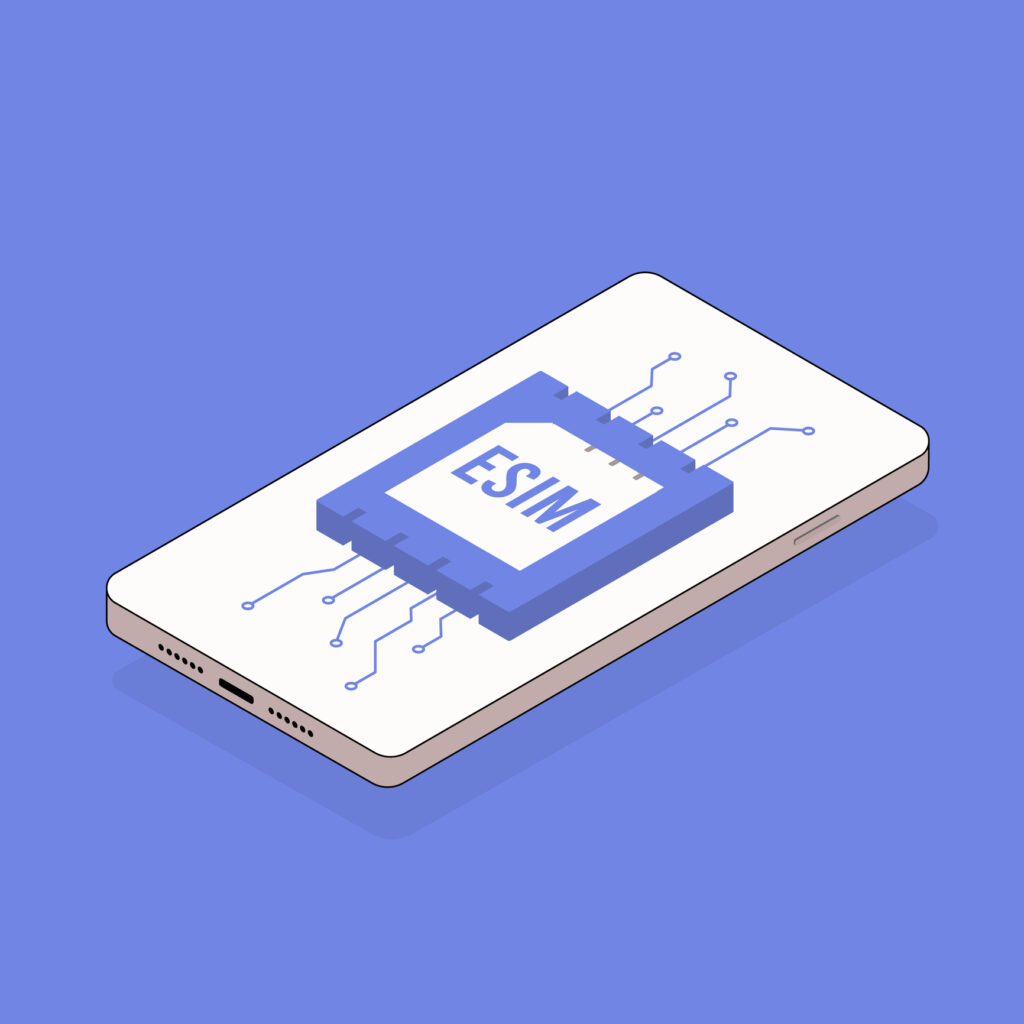
The familiar click of a physical SIM card slot is becoming a relic of the past. In its place, the embedded Subscriber Identity Module (eSIM) has emerged as a transformative force, reshaping how we connect and interact with the digital world. More than just a technological upgrade, eSIM represents a fundamental shift in connectivity, offering unparalleled flexibility, security, and efficiency. As we look towards the latter half of the 2020s, the landscape for eSIM companies is poised for exponential growth and profound innovation.
READY TO UNLOCK A NEW REVENUE STREAM FOR YOUR BUSINESS?
Bring the power of eSIM to your customers, under your brand.
The Rise of eSIM: A Market in Motion
The global eSIM market is experiencing remarkable expansion. Valued at approximately USD 9-12 billion in 2024, projections indicate it could reach well over USD 20 billion by 2030, with some estimates going as high as USD 45 billion by 2033, demonstrating a Compound Annual Growth Rate (CAGR) of 11% to 18% during the forecast period. This robust growth is fueled by several key factors:
- Widespread Device Adoption: eSIM is no longer limited to high-end smartphones. Its adoption is rapidly expanding across a diverse range of devices, including tablets, smartwatches, laptops, and a burgeoning array of IoT gadgets. Major manufacturers like Apple, Samsung, and Google are increasingly embedding eSIM functionality, making it a mainstream feature. By 2030, some reports predict that 75% of all smartphones globally will be eSIM-connected, and nearly 98% in North America.
- The 5G Revolution: The rollout of 5G networks is intrinsically linked to eSIM’s growth. 5G’s promise of ultra-fast speeds, low latency, and massive connectivity demands a flexible and scalable solution. eSIMs enable seamless network switching and support multiple operator profiles, making them ideal for leveraging the full potential of 5G, particularly in areas like IoT and mission-critical applications.
- Explosion of IoT Devices: The Internet of Things (IoT) is a major catalyst for eSIM adoption. From connected cars and smart meters to industrial sensors and medical devices, IoT requires efficient and secure connectivity without the logistical overhead of physical SIMs. eSIMs provide remote provisioning and dynamic management, simplifying large-scale IoT deployments across diverse environments.
- Enhanced User Experience: For consumers, eSIM offers unparalleled convenience. The ability to activate new cellular plans or switch carriers digitally, often within minutes, eliminates the hassle of visiting stores or waiting for physical SIM cards. This flexibility is particularly appealing to digital nomads and frequent travelers who can easily access local data plans and avoid exorbitant roaming charges.

Emerging Trends in the eSIM Market
Beyond the foundational drivers, several exciting trends are shaping the future of the eSIM market:
- Hyper-Personalized Connectivity: The ease of switching profiles with eSIM empowers consumers with unprecedented control over their connectivity. This will push providers to offer highly tailored data plans, dynamic pricing models, and specialized packages for specific use cases like travel, gaming, or remote work. Artificial intelligence (AI) will play a crucial role here, enabling eSIMs to automatically switch to the best available network based on speed, cost, and reliability, and allowing telcos to hyper-segment customers for personalized offerings.
- Convergence with New Technologies: eSIM will become increasingly intertwined with other cutting-edge technologies. The integration with AI, as mentioned, will optimize network performance and user experience. Furthermore, expect deeper integration with blockchain for enhanced security and identity management, and with satellite connectivity for truly global coverage, eliminating traditional coverage gaps.
- Sustainable Connectivity: In an increasingly eco-conscious world, eSIM offers a compelling sustainable solution. By eliminating the need for plastic SIM cards and their associated packaging, eSIM contributes to reduced waste and a smaller carbon footprint. This environmental benefit will likely become a stronger selling point for consumers and enterprises alike.
- Automotive as a Key Vertical: The automotive industry is rapidly embracing eSIM for connected car services, over-the-air software updates, remote diagnostics, and enhanced safety features. As vehicles become more autonomous and interconnected, eSIM will be the backbone for their communication needs [3, 5, 8]. The automotive and transportation sector is projected to be one of the fastest-growing segments for eSIM adoption, with significant CAGR through 2030 and beyond.
FUTURE-PROOF YOUR BUSINESS WITH eSIM.
Provide the cutting-edge connectivity your customers demand.
The Pivotal Role of MVNOs in the eSIM Space
Mobile Virtual Network Operators (MVNOs) are uniquely positioned to thrive in the eSIM era. Traditionally, MVNOs have leased network access from Mobile Network Operators (MNOs) and offered more niche or cost-effective services. eSIM amplifies their competitive advantages:
- Agility and Cost Optimization: By eliminating physical SIM cards, MVNOs can significantly reduce operational costs associated with production, storage, distribution, and customer support. Digital activation and management allow for faster service rollout and greater operational agility.
- Enhanced Service Flexibility: eSIM enables MVNOs to offer more dynamic and personalized service offerings. They can create temporary plans for travelers, specialized IoT connectivity packages, or even hyper-localized plans, attracting new market segments.
- Lower Barriers to Entry: The digital nature of eSIM lowers the barriers to entry for new MVNOs, fostering greater competition and innovation in the market. This increased competition will ultimately benefit consumers.
- Innovation in Niche Markets: MVNOs can leverage eSIM to specialize in underserved markets, offering tailored solutions for specific industries or customer demographics. Examples include travel eSIMs, which are seeing significant growth, and specialized IoT connectivity providers.
However, MVNOs also face challenges, including ensuring device compatibility, overcoming consumer resistance to change, and navigating diverse local regulations. Strategic partnerships with device manufacturers and robust marketing campaigns highlighting eSIM benefits will be crucial for their success.

Future Technologies Impacting eSIM
The evolution of eSIM is not a standalone phenomenon; it’s deeply interwoven with broader technological advancements:
- iSIM and iUICC: Integrated SIM (iSIM) and Integrated Universal Integrated Circuit Card (iUICC) are the next generation of embedded connectivity, where SIM functionality is directly integrated into the device’s main chipset. This further reduces hardware footprint, enhances security, and offers even greater cost efficiencies. Expect iSIM to become increasingly prevalent in the coming years, particularly in compact IoT devices.
- Edge Computing: As more data processing shifts to the network edge, eSIM will facilitate seamless and secure connectivity for these distributed computing environments. This will be critical for applications requiring ultra-low latency, such as autonomous vehicles and real-time industrial automation.
- Blockchain for Identity and Security: Blockchain technology offers a decentralized and immutable ledger that can enhance the security and integrity of eSIM profiles and user identities. This could lead to more robust authentication mechanisms and improved data privacy.
- Satellite-Cellular Convergence: Hybrid designs integrating narrowband IoT (NB-IoT), LTE-M, and narrowband satellite links on a single eSIM are already commercially available. This convergence will remove the final coverage gaps, enabling truly global connectivity for applications in remote areas like agriculture, mining, and maritime tracking.
Market Predictions and Consolidation
The rapid growth and innovation in the eSIM market are likely to lead to several significant shifts:
- Increased Adoption Across Verticals: While consumer electronics and M2M/IoT are currently driving the market, expect substantial growth in other sectors like healthcare (medical devices, patient monitoring), retail (smart POS systems, inventory tracking), and logistics (asset tracking, fleet management).
- Telco Operators’ Strategic Response: Traditional MNOs, initially wary of eSIM due to potential churn, are now embracing it as a strategic imperative. They are investing heavily in digital-first strategies, streamlining eSIM provisioning, and offering competitive plans to retain customers and capture new segments, particularly in the lucrative IoT market.
- Consolidation and Partnerships: As the market matures, expect to see a wave of consolidation. Smaller, independent eSIM providers might be acquired by larger MNOs or technology giants looking to bolster their eSIM capabilities and market share. Strategic partnerships between chipset manufacturers, device OEMs, and network providers will also become more prevalent to drive standardization and interoperability.
- The Decline of Physical SIM: While physical SIMs will persist in some developing markets for a while, their market share will continue to decline. The future of mobile connectivity is undeniably digital, and the widespread adoption of eSIM will eventually render physical SIM cards obsolete in most devices.
Conclusion
The future of eSIM companies is bright, marked by relentless innovation and a rapidly expanding market. From empowering seamless global connectivity for consumers to enabling the widespread adoption of IoT and enhancing the capabilities of 5G, eSIM is a foundational technology for the digital age. Companies that can effectively navigate the evolving landscape, embrace emerging trends, and forge strategic partnerships will be well-positioned to lead this exciting transformation and capture significant value in the years to come. The era of embedded, intelligent, and instantly provisioned connectivity is not just on the horizon – it’s already here.


